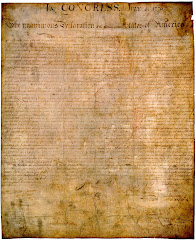
The Decision to Use the Atomic Bomb and the Architecture of an American Myth. By Gar Alperovitz. (New York: Knopf, 1995. xiv, 847 pp. $32.50, ISBN 0-679-44331-2.)
The Decision to Drop the Atomic Bomb. By Dennis D. Wainstock. (Westport: Praeger, 1996. x, 180 pp. $55.00, ISBN 0-275-95475-7.)
The Last Great Victory: The End of World War II, July/August 1945. By Stanley Weintraub. (New York: Dutton, 1995. xvi, 730 pp. j35.00, ISBN 0-525-93687-4.)
Harry S. Truman and the Bomb: A Documentary History. Ed. by Robert H. Ferrell. (Worland, Wyo.: High Plains, 1996. x, 125 pp. $24.50, ISBN 1-881019-12-8.)
History Wars: The Enola Gay and Other Battles for the American Past. Ed. by Edward T. Linenthal and Tom Engelhardt. (New York: Metropolitan, 1996. viii, 295 pp. Cloth, $30.00, ISBN 0-8050-4386-1. Paper, $14.95, ISBN 08050-4387-X.)
 American observance of the fiftieth anniversary of the end of World War II in 1995 occasioned bitter controversy. An uncomfortable Clinton administration canceled a mushroom cloud postage stamp and tentatively suggested that it might be kinder to Japan to talk of V-P Day instead of V-J Day. An angry dispute over the viewpoint of the Smithsonian Enola Gay exhibition culminated in a purge at the nation's greatest cultural institution. These books all deal in one fashion or another with the Enola Gay, that mushroom cloud, and its enduring implications.
American observance of the fiftieth anniversary of the end of World War II in 1995 occasioned bitter controversy. An uncomfortable Clinton administration canceled a mushroom cloud postage stamp and tentatively suggested that it might be kinder to Japan to talk of V-P Day instead of V-J Day. An angry dispute over the viewpoint of the Smithsonian Enola Gay exhibition culminated in a purge at the nation's greatest cultural institution. These books all deal in one fashion or another with the Enola Gay, that mushroom cloud, and its enduring implications.Gar Alperovitz has been a presence of major significance in the study of the bomb and the endgame of World War II for a generation. His latest project, The Decision to Use the Atomic Bomb and the Architecture of an American Myth, has drawn wide attention. A critical review of it by John Bonnett that appeared on the H-Net diplomatic history service, H-Diplo, was followed by a protracted and tempestuous controversy (http: / h-net 2. msu. edu / - diplo / balp.htm). Alperovitz's thesis basically repeats the one pressed in his earlier Atomic Diplomacy (1965, 1985, 1994) but is stated at much greater length, much more elaborately, and with the help of no less than seven collaborators listed under his name on the title page. Extensively researched and documented by 112 pages of endnotes, this book is the end result of a long joint effort beyond the capabilities of most scholars. Financing came from no less than ten foundations or funds and "several individuals who traditionally have preferred to remain anonymous in their various philanthropic efforts."
Alperovitz argues that the atomic bomb was unnecessary to end World War II for the following reasons:
1. The Japanese government wanted to surrender; its leaders, military as well as civilian, rationally understood that the war was lost. But they had a determined attachment (irrational?) to the emperor. Japan would have surrendered, very possibly as early as June 1945, had its ruling establishment received guarantees of the emperor's personal safety and continuance on the throne. This should have been the first step in an American surrender strategy.
2. Any remaining Japanese reluctance to quit the war would have been quickly overcome by the second step, entry of the Soviet Union in August 1945.
3. American failure to accept and implement this "two-step logic" for an expeditious end to World War II was largely a result of the emerging Cold War and especially American concern over Soviet ambitions in Eastern Europe and northeast Asia.
4. The American public would have accepted some modification of the unconditional surrender policy in order to avoid prolongation of the war. The Washington Post and Time magazine advocated its abandonment; so did some United States senators. Many military leaders and diplomats-British as well as Americanconcurred.
5. President Harry S. Truman seemed inclined to give assurances on the emperor, then pulled back. He did so out of concern with Soviet behavior and with increasingly firm knowledge that the United States would soon have atomic weapons available. Coming to believe that the bomb would be decisive and anxious to keep the Soviet Union out of Manchuria, he dropped modification of unconditional surrender; moreover, he sought to prevent a Soviet declaration of war against Japan by encouraging China not to yield to Soviet demands beyond those granted at Yalta. In so doing, he acted primarily at the urging of James F. Byrnes, the archvillain in the plot.
6. Truman also refused to move on Japanese peace feelers, apparently in the belief that it was necessary to prevent a Japanese surrender before the bomb could be demonstrated to the world, and especially to the Soviet Union. The result was the needless destruction of Hiroshima and Nagasaki - and many allied casualties that need not have happened.
7. In subsequent years, the American decision makers of 1945 devoted considerable energy to the construction of a misleading "myth" that attempted to vindicate the use of the bomb by denying Japanese efforts at peace and by asserting grossly inflated estimates of American casualties that would have been sustained in an invasion of Japan.
More...






